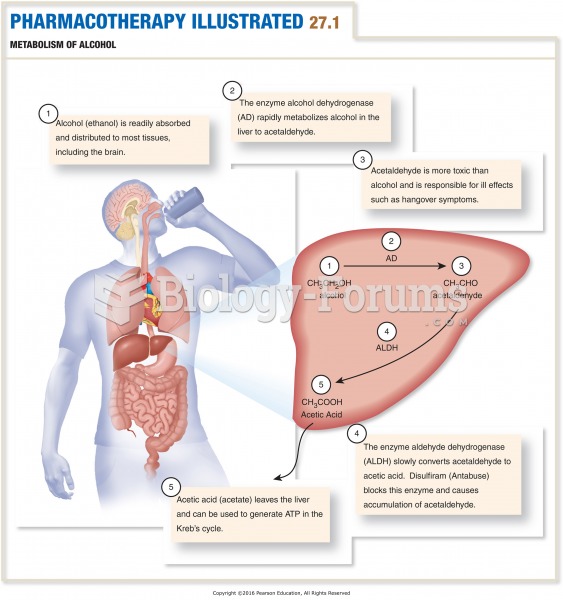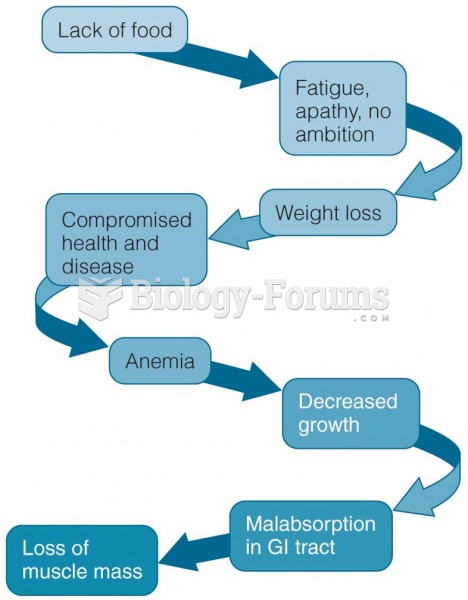Answer to Question 1
Alcohol cirrhosis is a liver disease that occurs in about 10 to 15 of people with alcoholism. Cirrhosis is the slow deterioration and malfunction of the liver due to chronic injury. In the case of alcoholism, the injury is from alcohol exposure. Chronic alcohol consumption can impair the liver's ability to detoxify the blood, leading to the development of scar tissue. In turn, scar tissue obstructs blood flow and impairs the liver's function.
Long-term alcohol abuse also harms the brain. Wernicke-Korsakoff syndrome is caused by deficiencies in thiamine secondary to alcohol dependence. The syndrome is characterized by a cluster of symptoms including confusion, amnesia, and confabulation, an adaptation to memory loss in which the individual fills in blanks with made-up information. Wernicke's encephalopathy includes short-term memory loss, paralysis of the eyes, and unsteady gait. Because people with Wernicke-Korsakoff syndrome lose the ability to learn from experience, they almost always require custodial care, and 80 of individuals with this condition will not regain full cognitive function.
Fetal alcohol syndrome (FAS), another severe consequence of alcohol use, occurs when a pregnant woman drinks alcohol and it passes through the placenta and harms the developing fetus. Children with FAS have classic identifiable facial anomalies, including short palpebral fissure lengths (distance from the inner to outer corner of the eye) a smooth philtrum (area between the nose and upper lip) and a thin upper lip. There may also be neurodevelopmental abnormalities including small head size, structural brain abnormalities, and neurological problems such as impaired fine motor skills, hearing loss, poor eye-hand coordination, and abnormal gait. As the child develops, there may be other problems, including learning difficulties, poor school performance, and impulse control problems. A primary determinant of the severity of FAS is how much and how frequently the mother drinks.
Answer to Question 2
The active ingredient in any alcoholic drink, ethyl alcohol, is quickly absorbed via the stomach and intestines into the bloodstream. Then it is distributed throughout the body and quickly acts to depress the central nervous system. Although alcohol affects many neurotransmitter systems, its effect on receptors in the brain's gamma aminobutyric acid (GABA) system are particularly noteworthy. GABA is the brain's primary inhibitory neurotransmitter. So, by increasing GABA firing, alcohol inhibits other brain activity.
This explains why alcohol is called a depressant. Continued drinking leads to a slowing (depression) of the central nervous system, impairing motor coordination, decreasing reaction times, and leading to sad mood, impaired memory, poor judgment, and visual and auditory disturbances. Impairment ranges from mild feelings of being tipsy to more extreme levels of intoxication, or being drunk.







